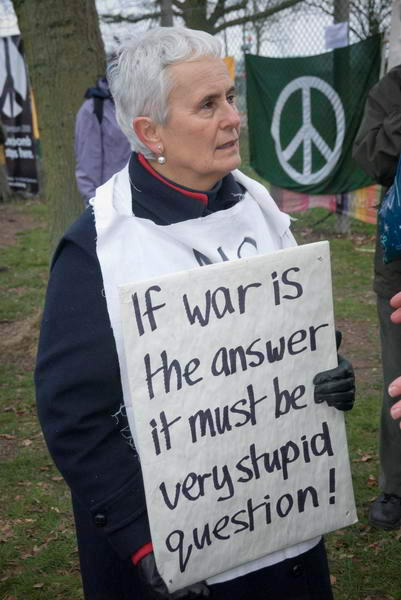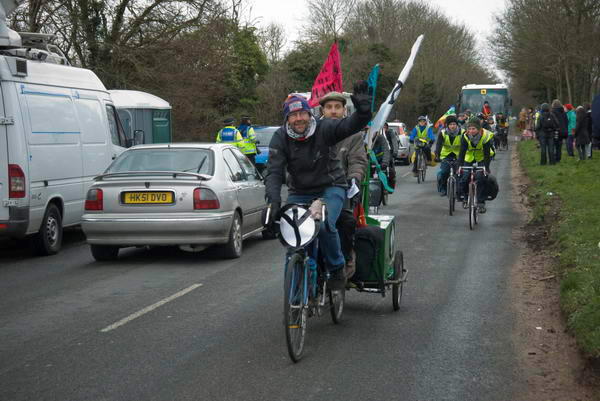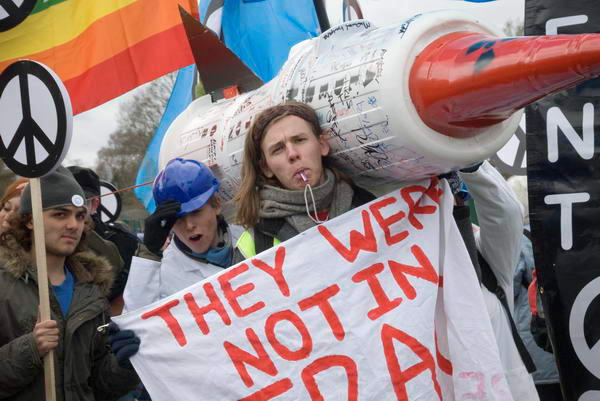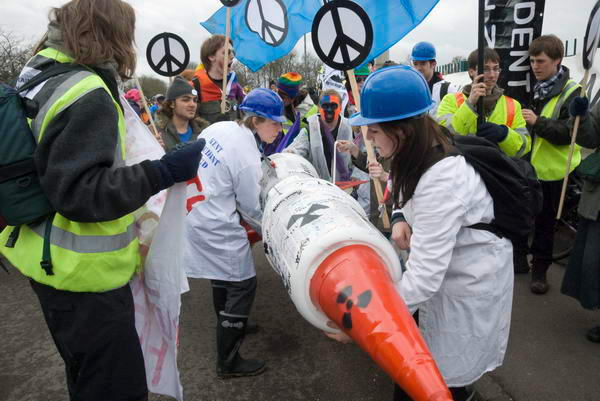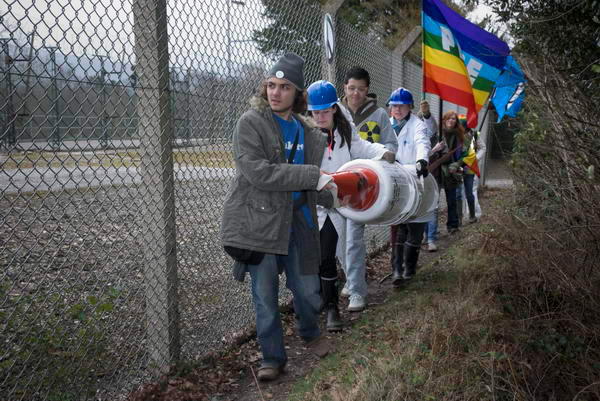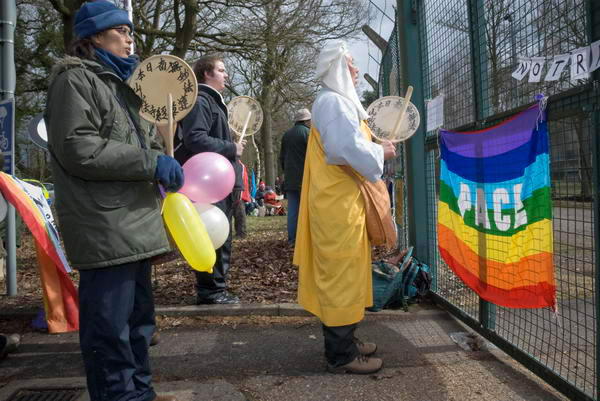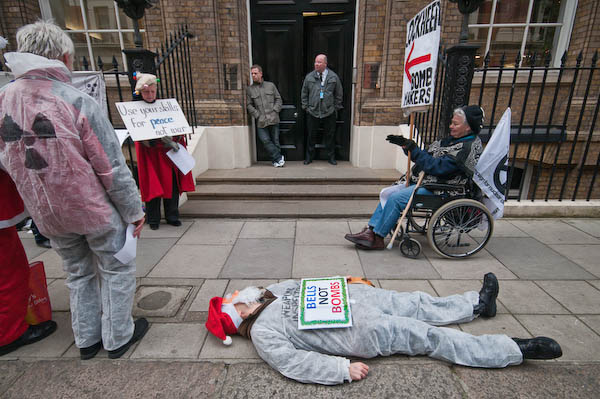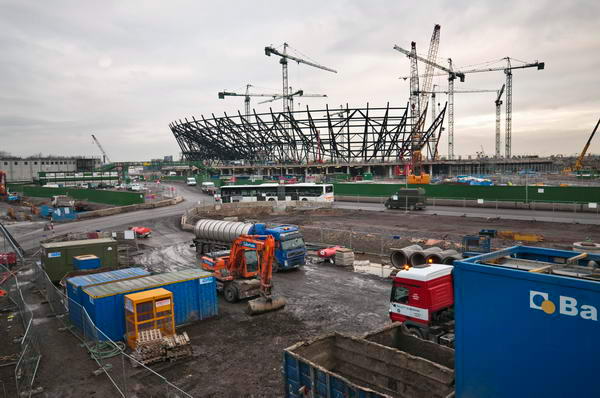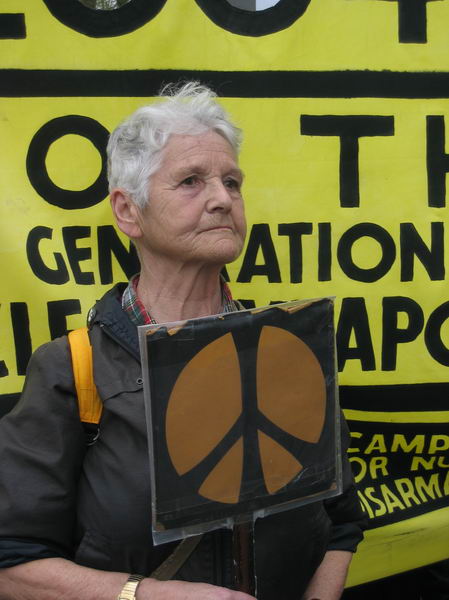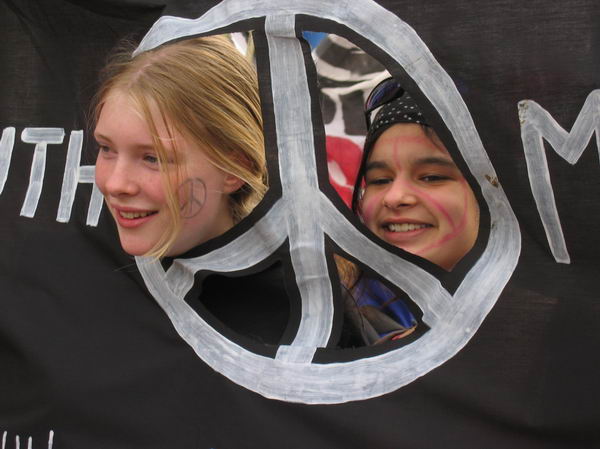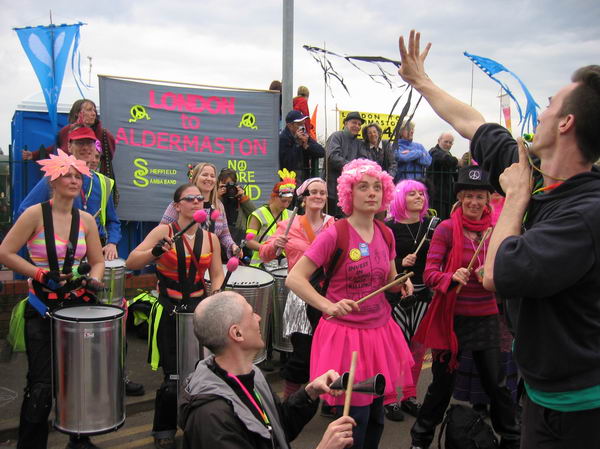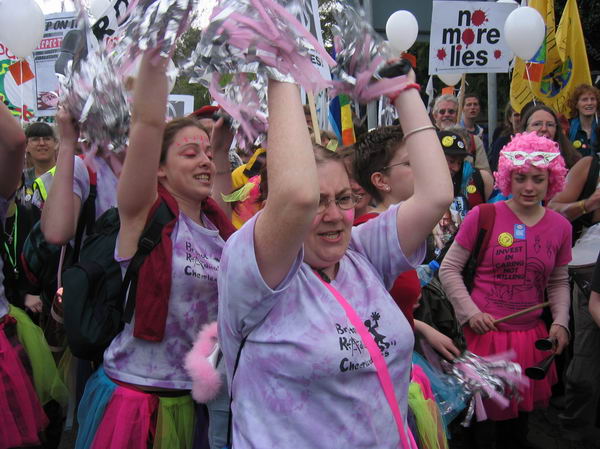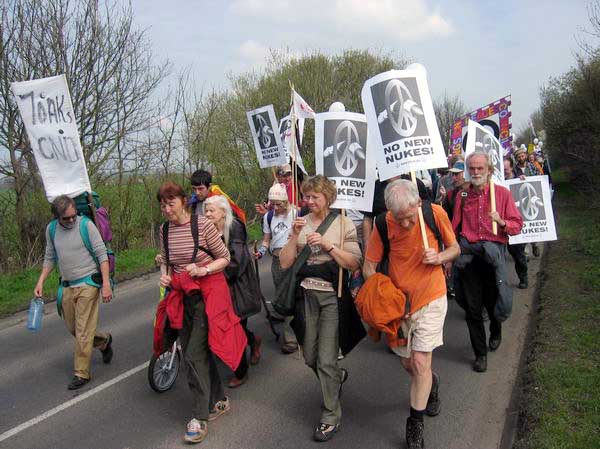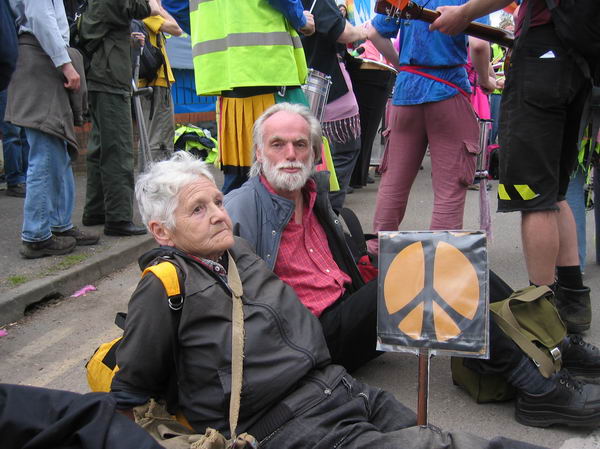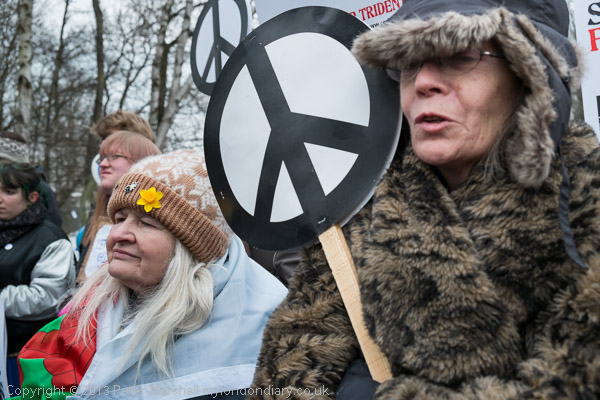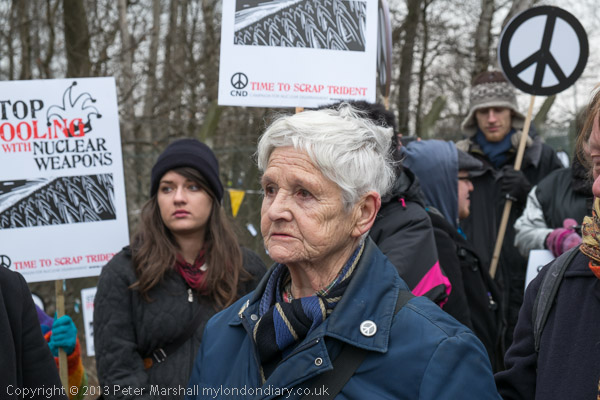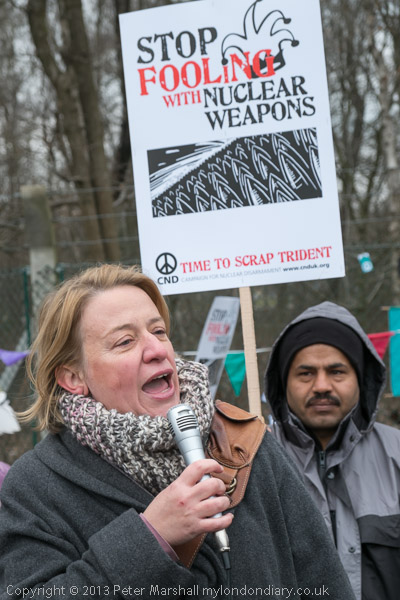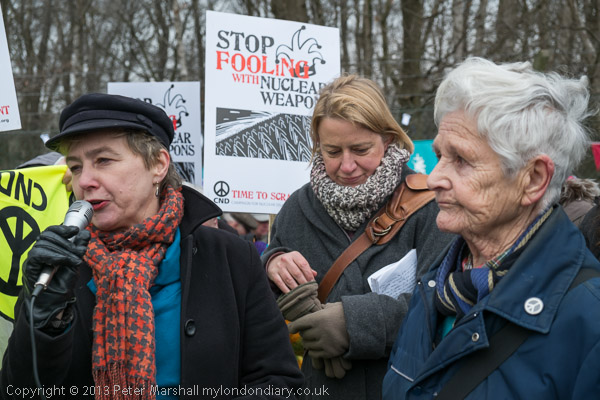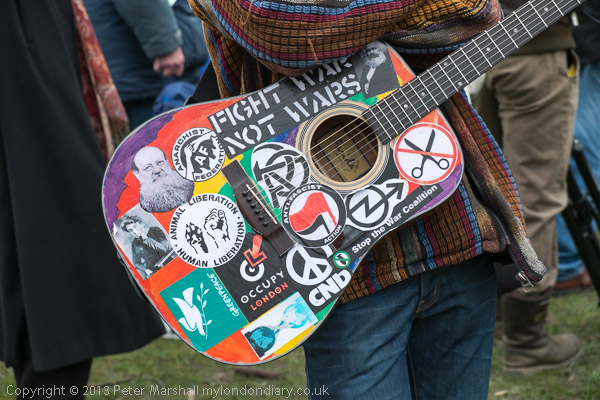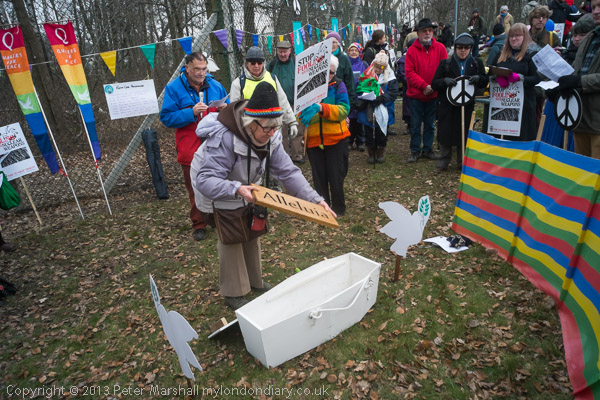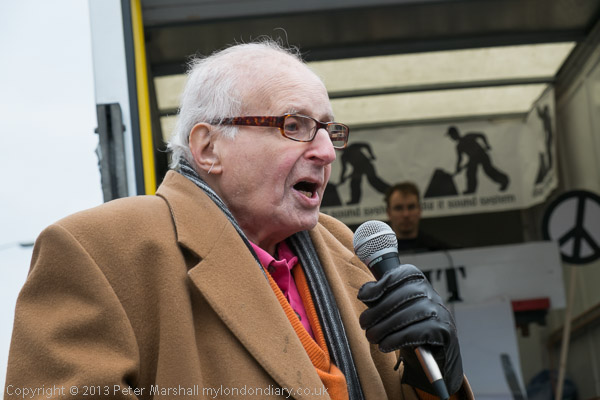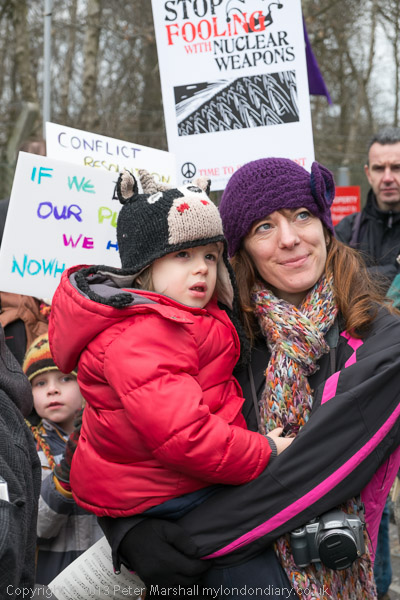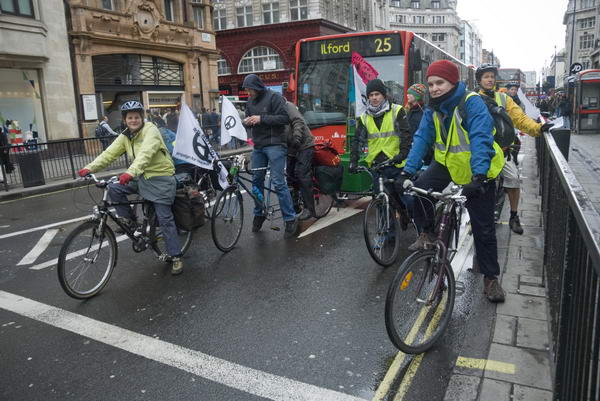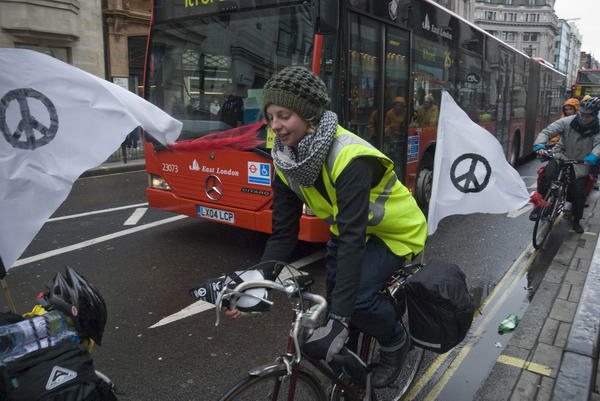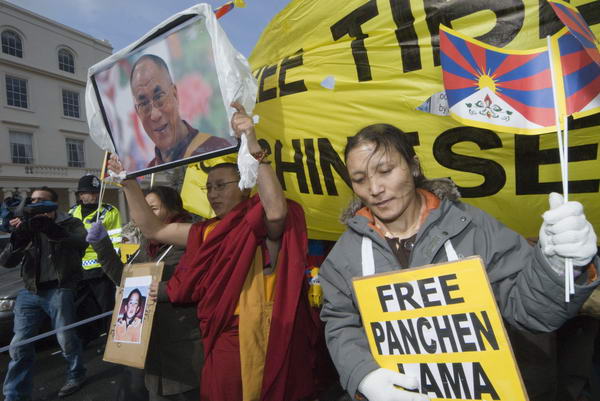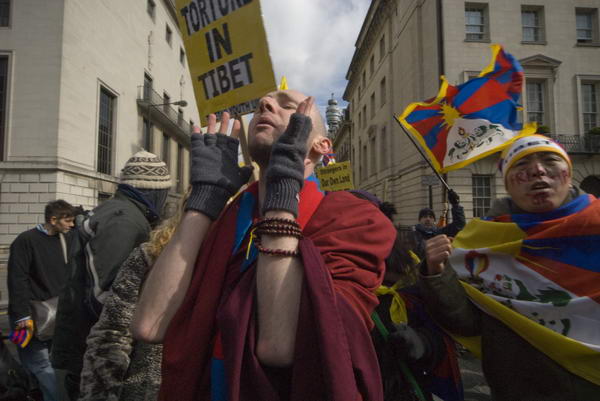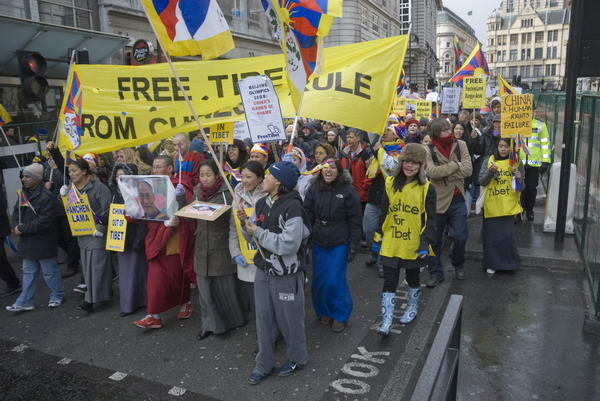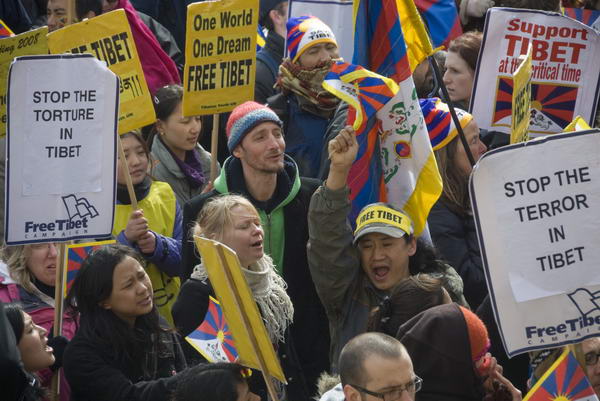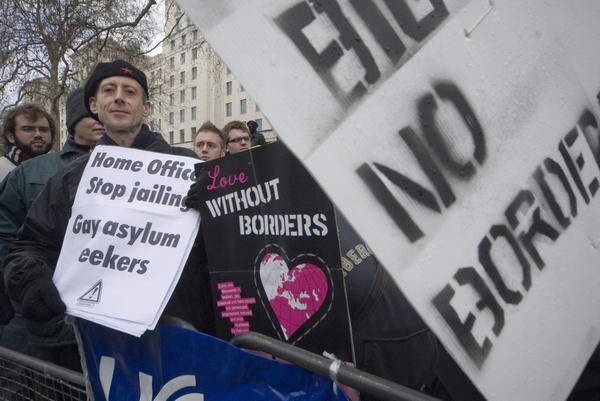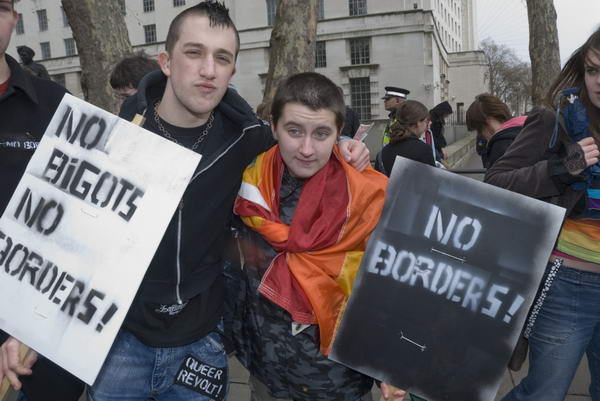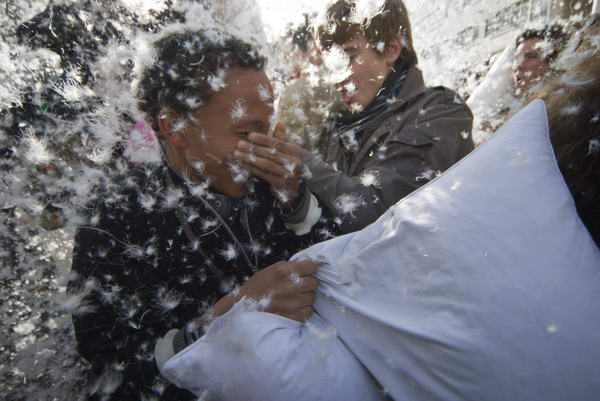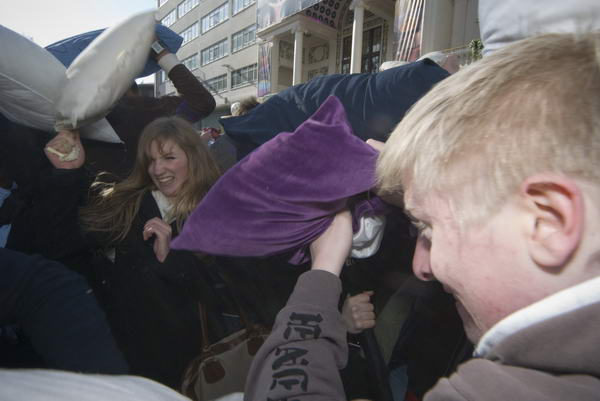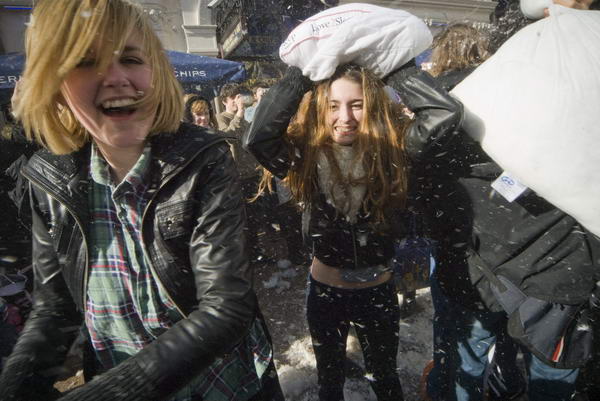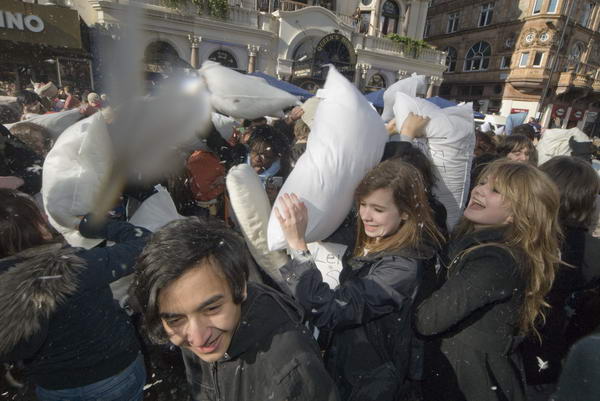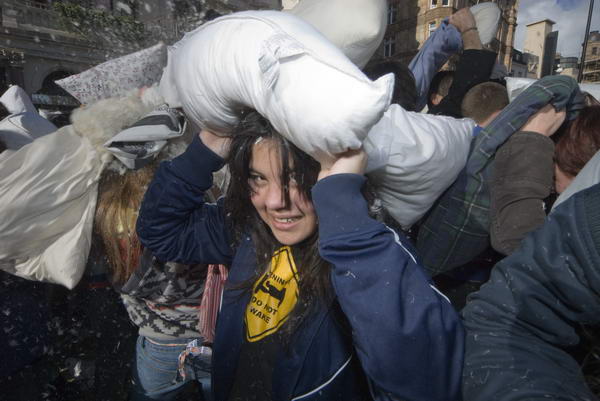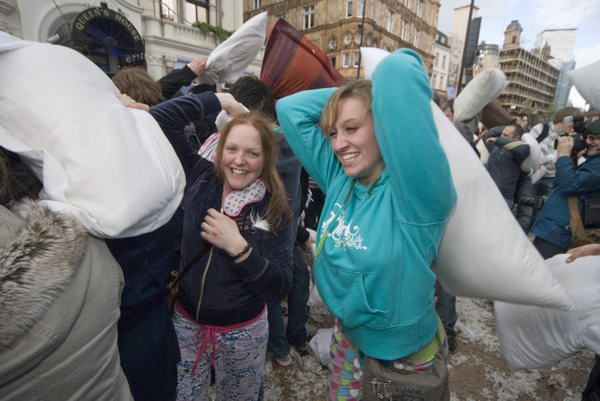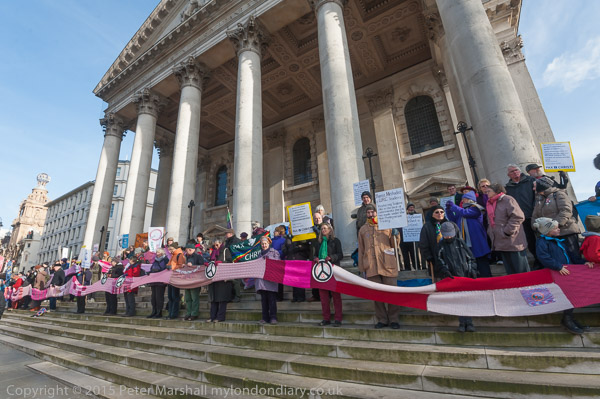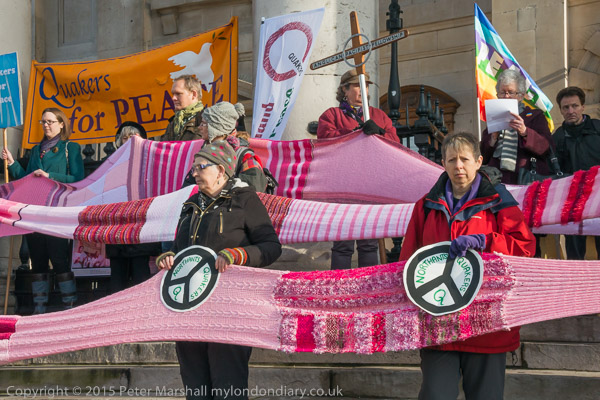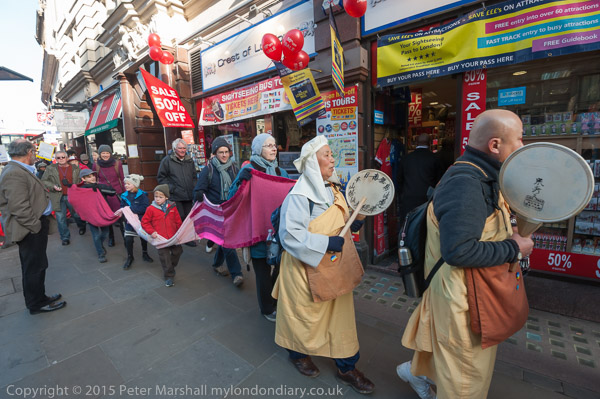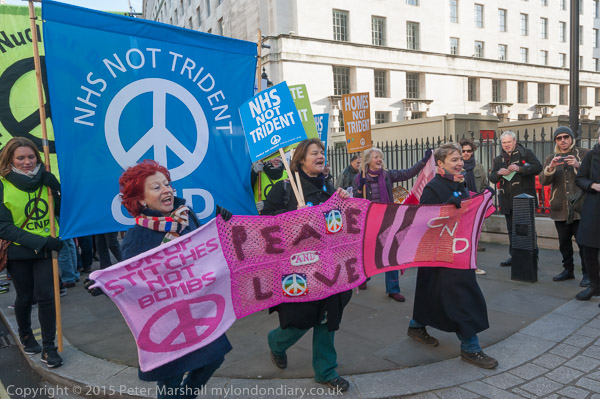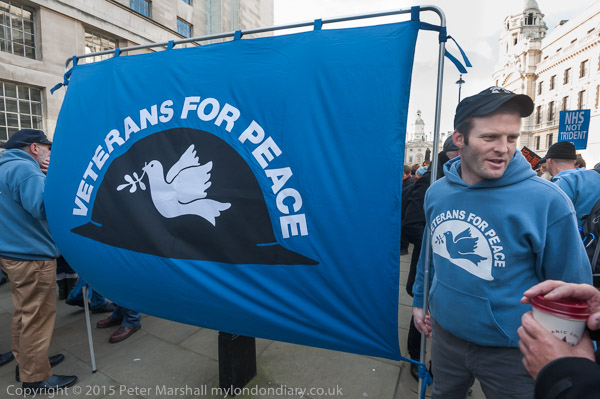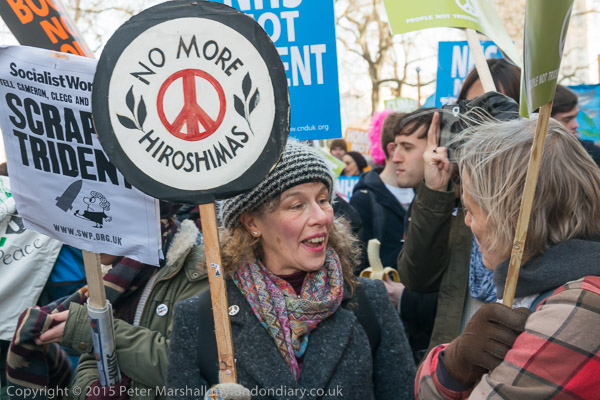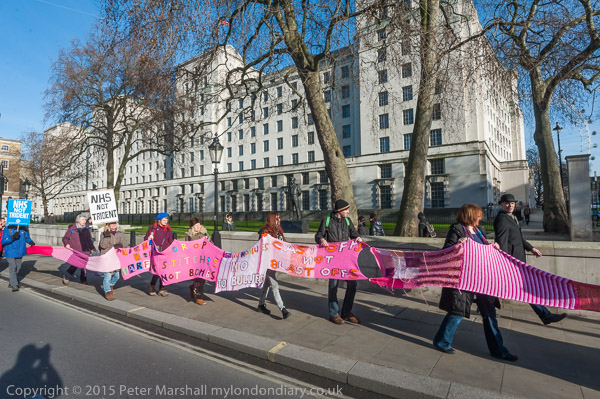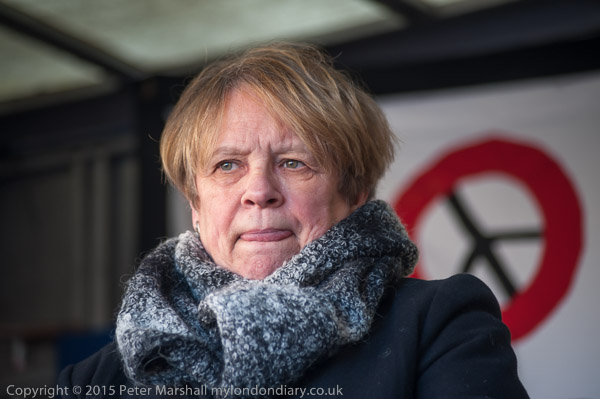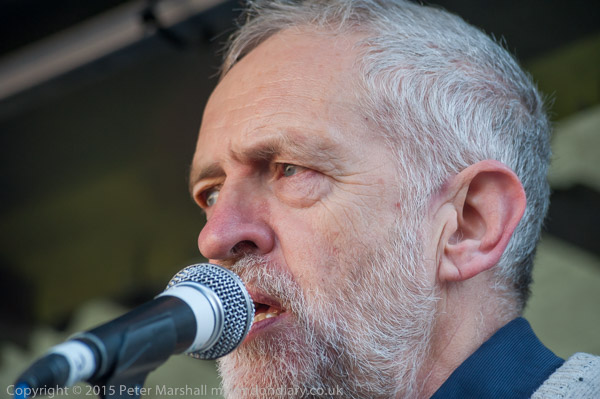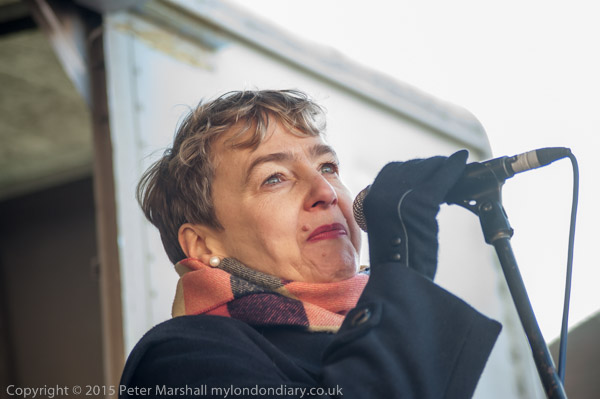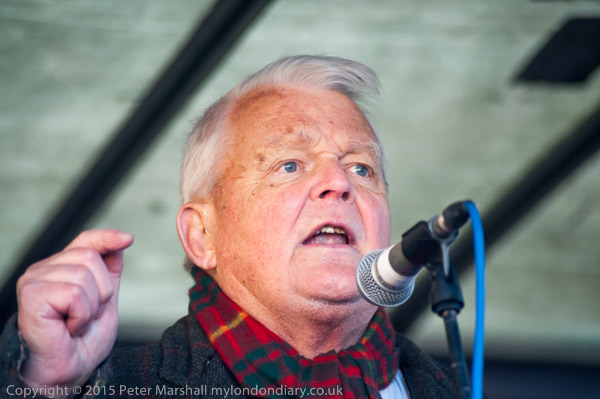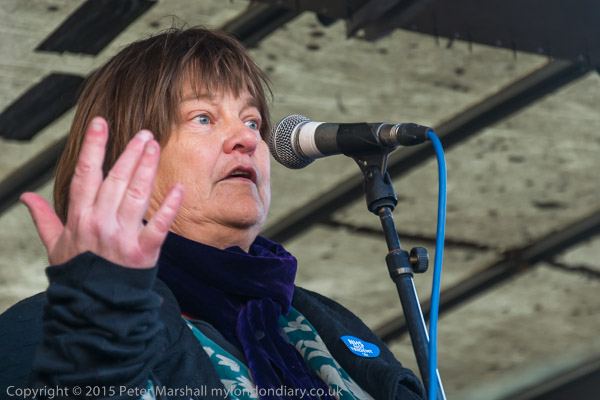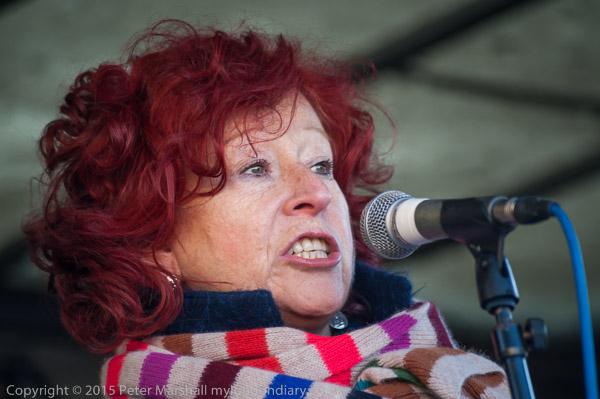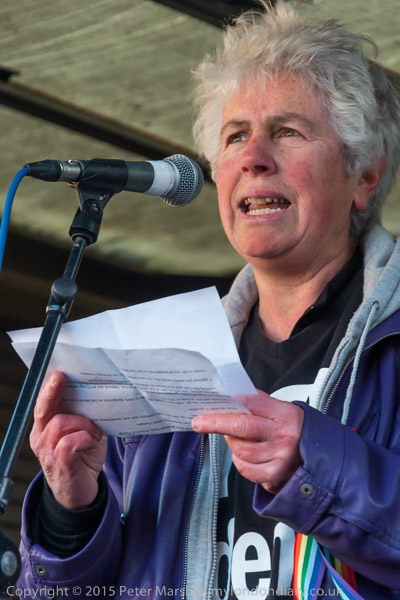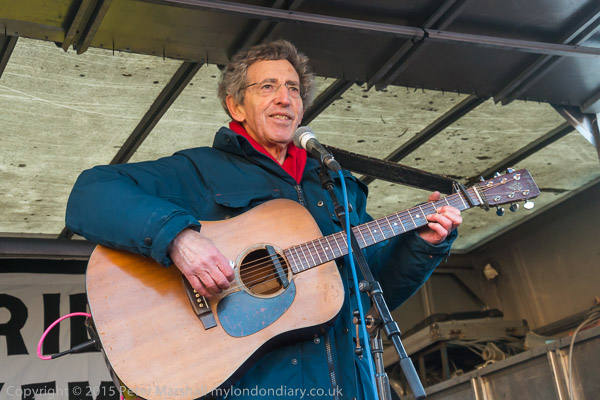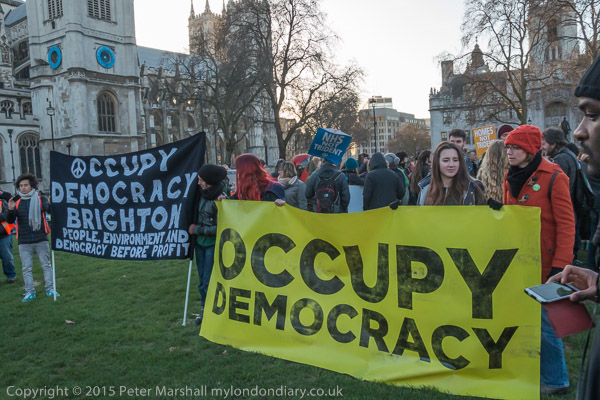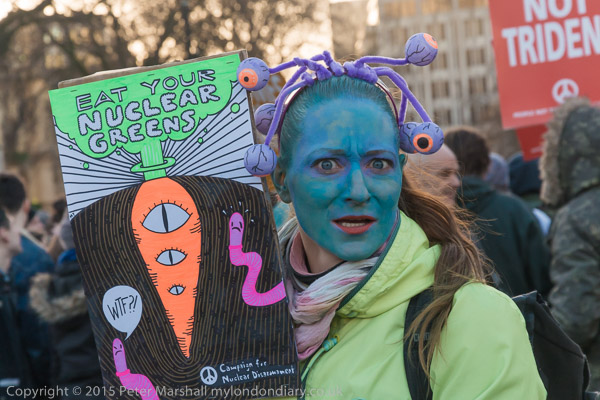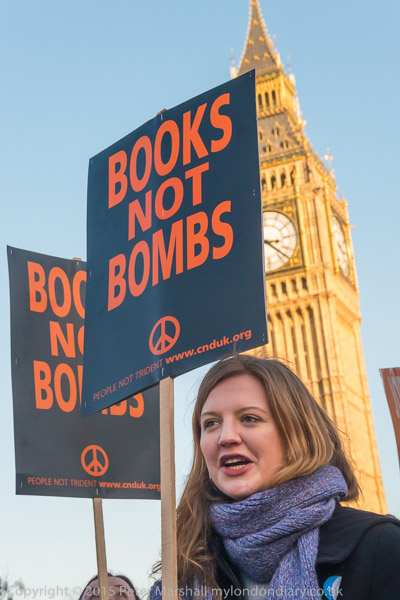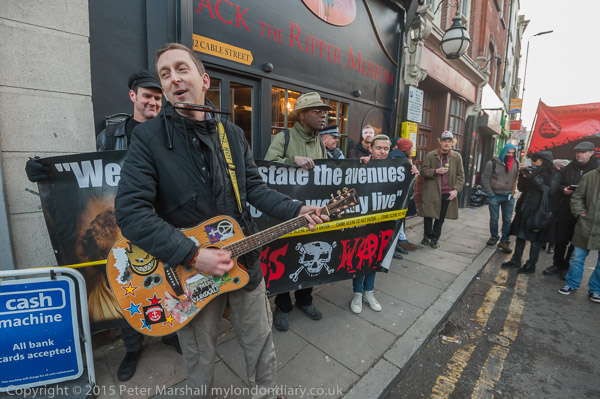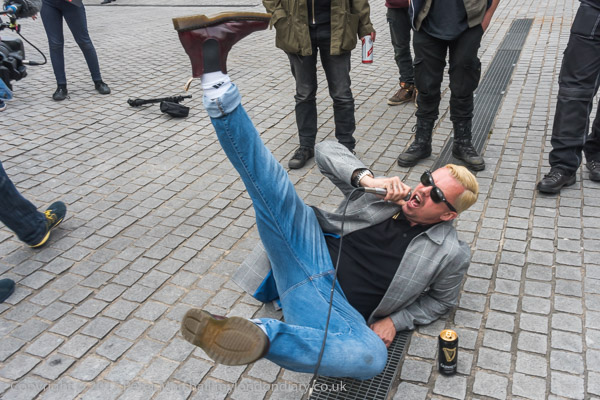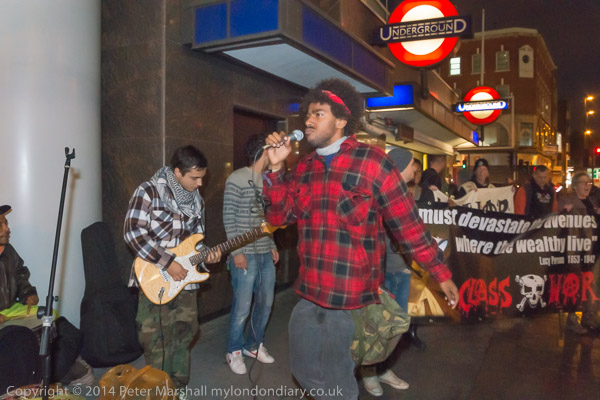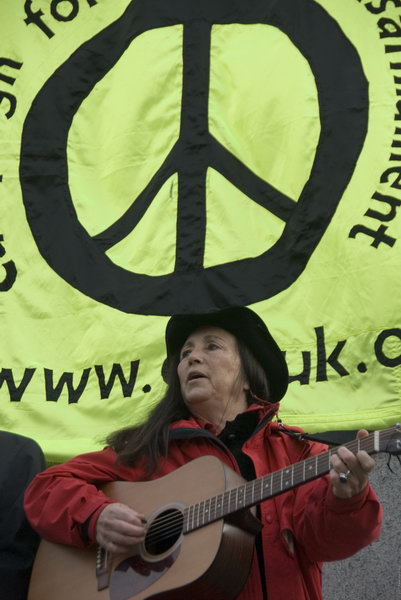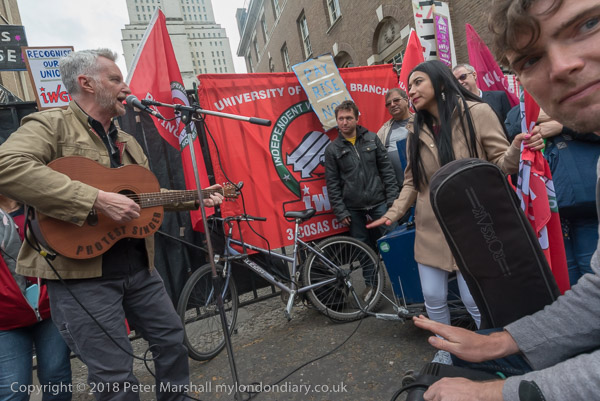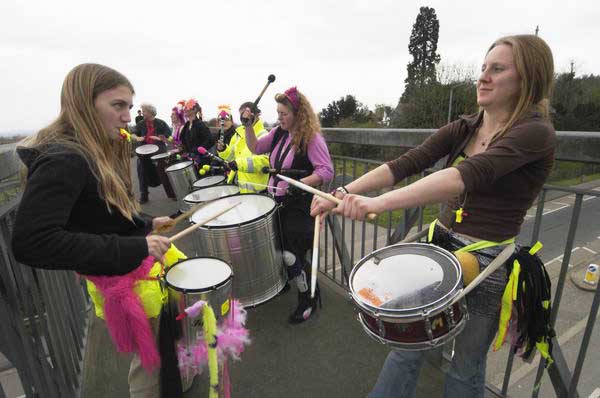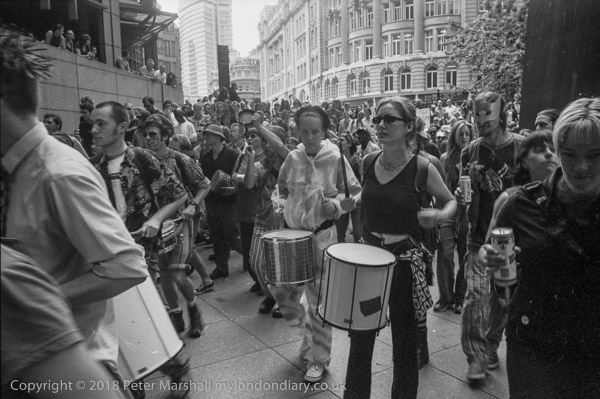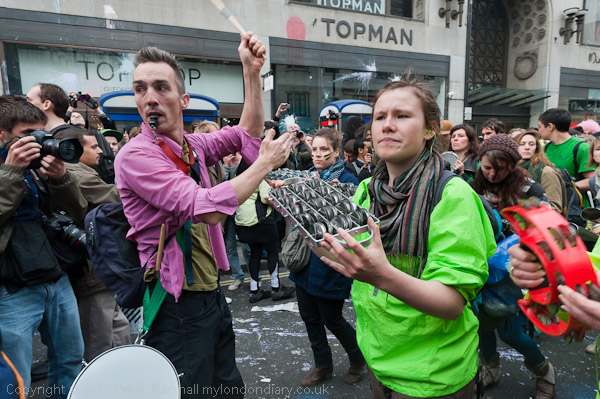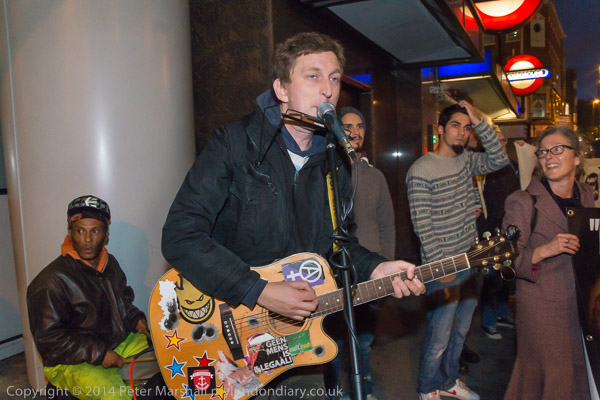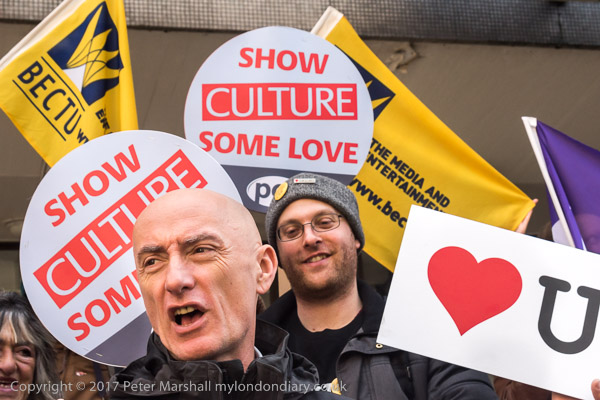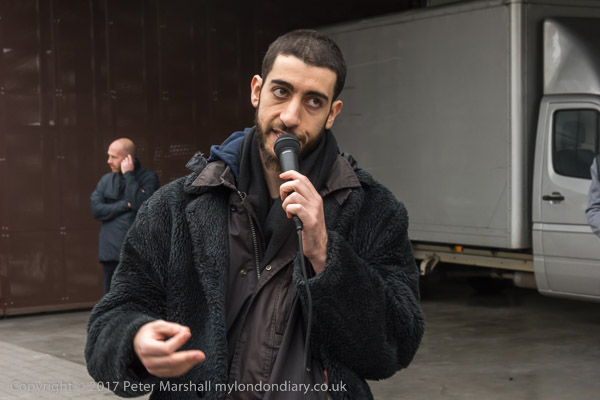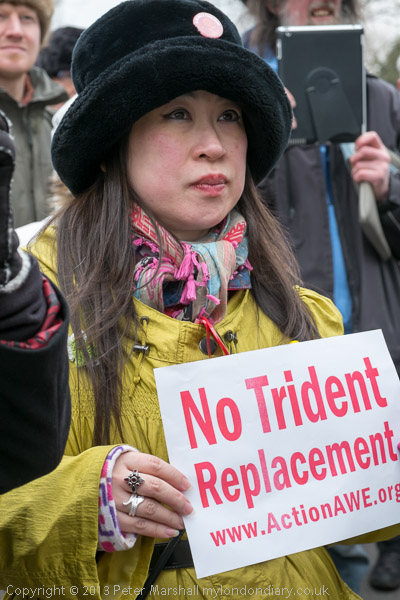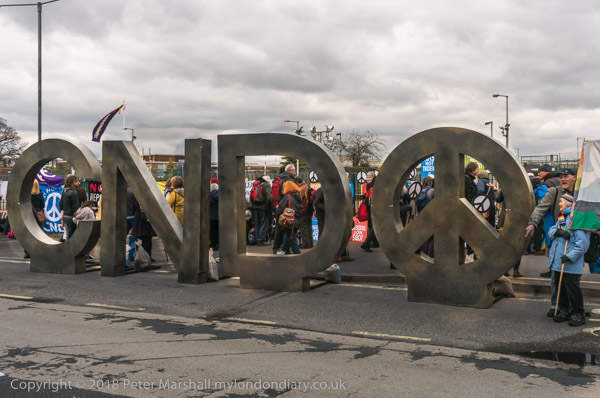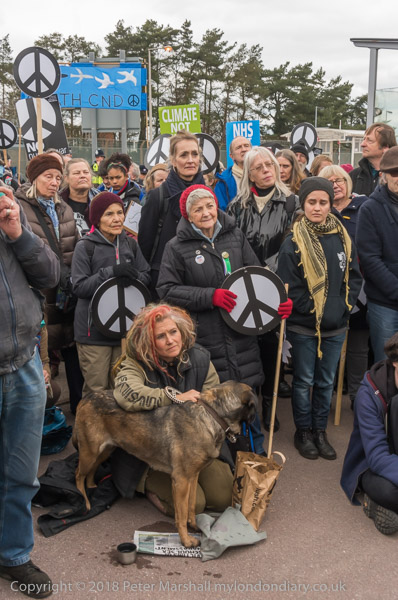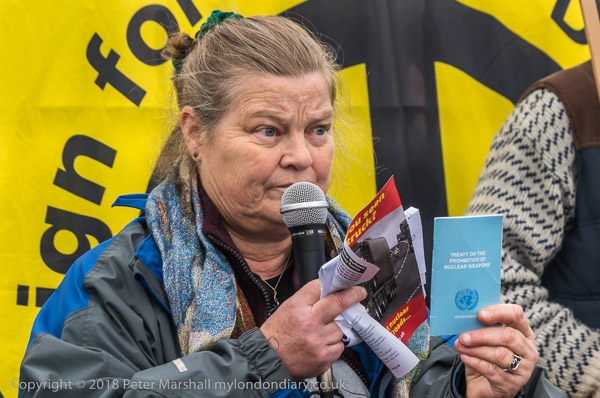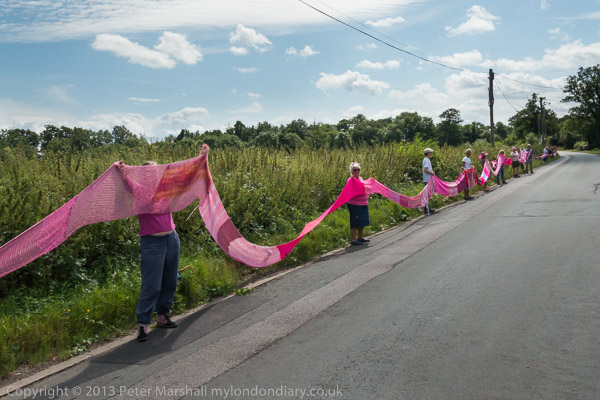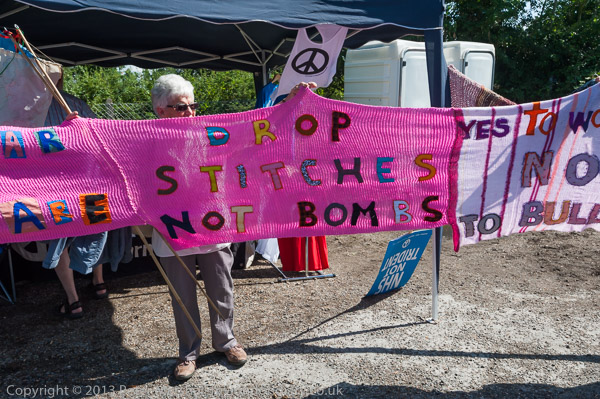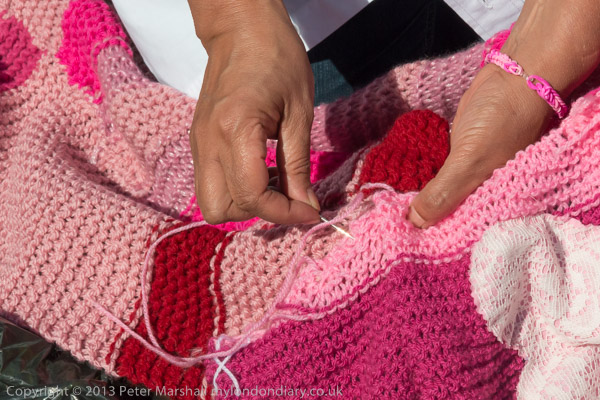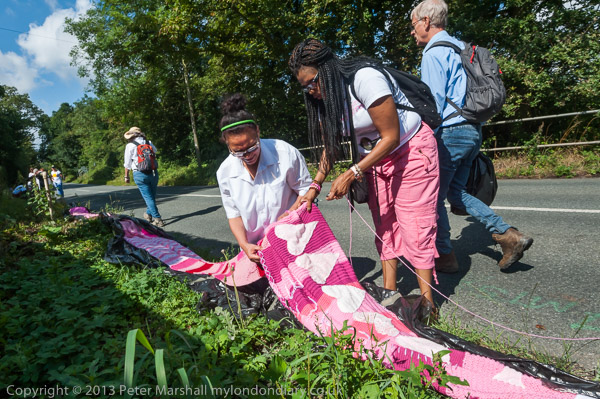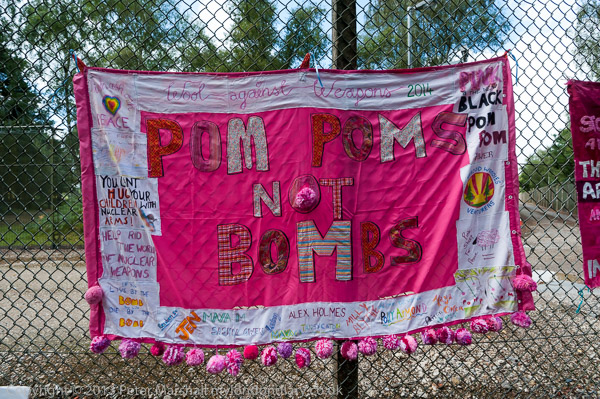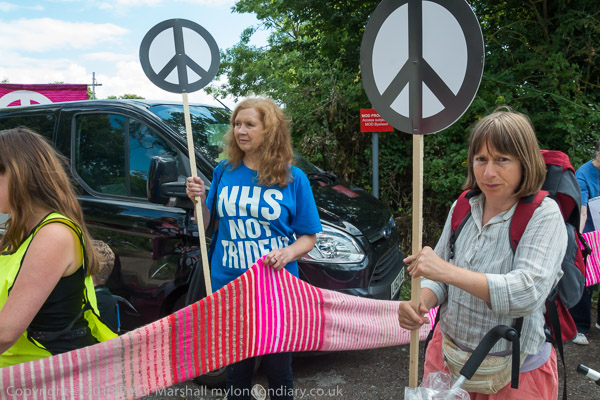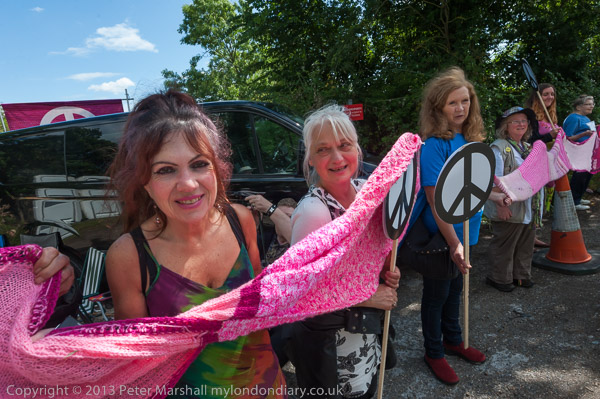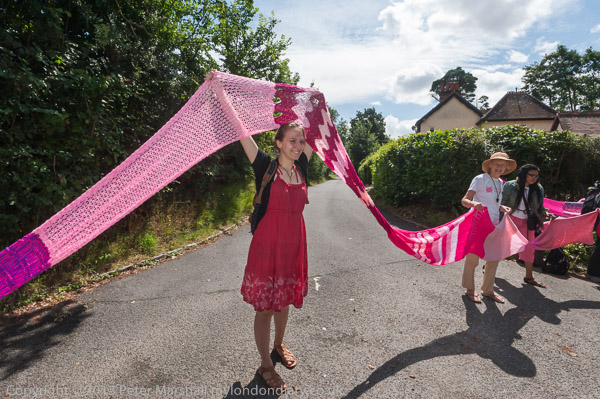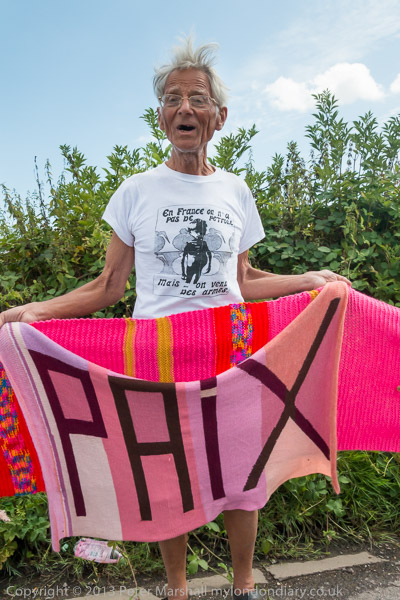2004 Aldermaston March. On Friday 9th April the 2004 Aldermaston March began with a rally in Trafalgar Square before following the route taken by the first march back in April 1958, which had also begun with a rally in the square. The 2004 march was called as a protest against the development then of a new generation of nuclear weapons.
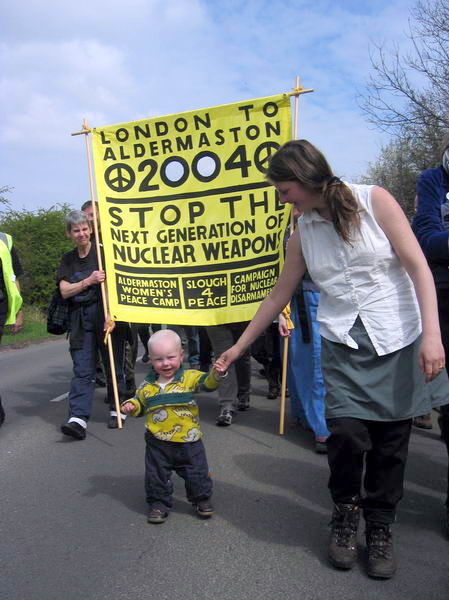
I covered the rally and went with the marchers as far as Hyde Park, and cycled to join them again in Maidenhead on Sunday 11th, walking with them for a few miles before returning to pick up my bike and cycle home. On the final day I caught the train to Reading and walked with them to Aldermaston.
I put many of my pictures from the march on My London Diary where you can still view them, and wrote a post about the events which I’ll reproduce here with proper capitalisation and some minor corrections, along with a few of the pictures I made in London on Friday 9th April 2004.
Aldermaston 2004: No New Nukes Rally & Start of March

Aldermaston isn’t in London, but the ‘stop the next generation of nuclear weapons‘ march from London to Aldermaston started on Good Friday, 9 April 2004, from Trafalgar Square, where there was a ‘No New Nukes‘ rally.
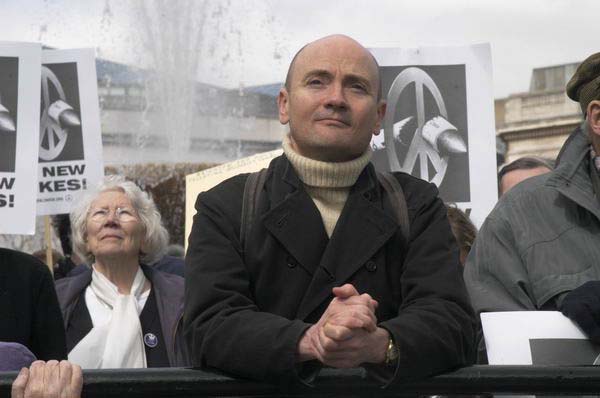
Aldermaston and nearby Burghfield are at the centre of the UK’s atomic weapon programme, and the march was a protest against the development of a new generation of nuclear weapons.

In 1958 the dangers of nuclear war were clear to most of us, and almost fifty years of the proliferation of weapons of mass destruction among members of the nuclear club make them even more of a danger now. We have seen another almost 50 years of lies and deception dressed up as security and national interest. For example we still haven’t been told of the nuclear warheads kept by our American allies at Lakenheath.
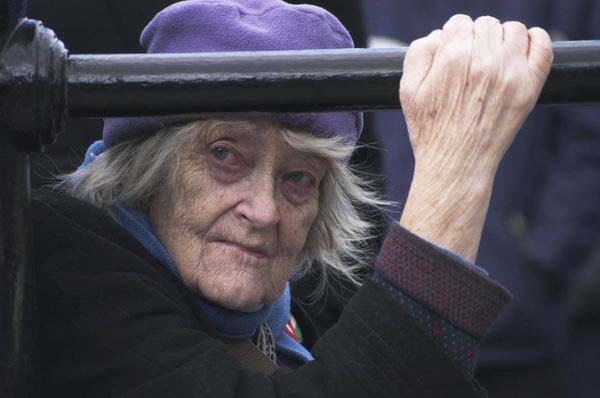
It was good to see many familiar faces, both on the platform and off, with addresses from Tony Benn, Jenny Jones, Pat Arrowsmith, Jeremu Corbyn and more, including a fine performance from Susannah York. There were a considerable number who had been on the first Aldermaston march, back in 1958, forty six years ago. I was too young to be involved then, but my two older brothers had been there.
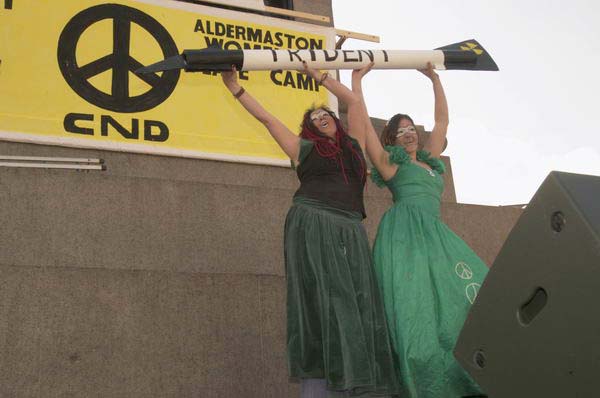
‘Theatre Of War’ gave a spirited performance, and there was a jazz band to add a little spirit at the front of the march, perhaps a reminder of the trad boom of the fifties. Pat Arrowsmith, Bruce Kent and some other CND veterans were up there too, leading off the 2,300 who led off through St James. The police estimated the march at 1000. I actually stood and counted as they went by, and although it isn’t an exact science with a march this size, I won’t be more than fifty or so out either way.
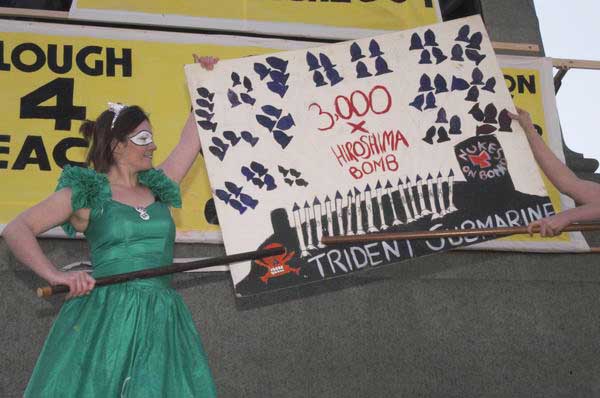
It was a cheerful sendoff to those marchers on the long plod to Aldermaston, one of several marches there starting from different parts of the country.

At Hyde Park, the march proper formed up, with around 430 making their way west through Kensington and towards the first night stay at Southall. I couldn’t walk all the way, although I’d probably covered as much distance running around taking pictures and left the march in Kensington.

On Saturday, the march continued from Southall to Slough via Uxbridge. I had other things to do in the East End and central London, but I managed to catch up with the march on Sunday morning at Maidenhead Bridge with some furious bike riding from Staines.
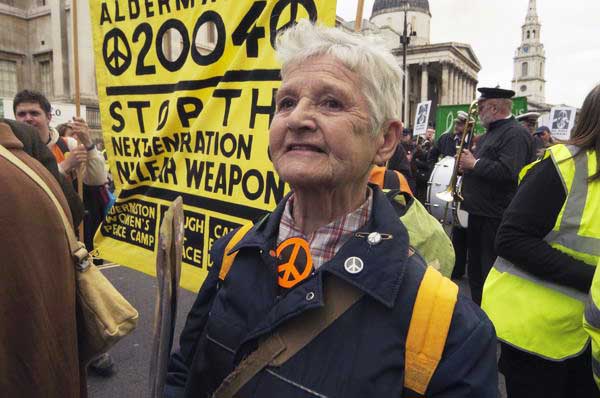
By then, some problems with Thames Valley Police had emerged, with the police trying to force the march on to the pavement, while some marchers insisted on keeping to the road. In the end a compromise emerged, with the police tolerating those who wanted to stay on the road walking close to the edge of the pavement.

From Maidenhead it seemed a long walk along the A4 to Knowl Hill for a rather late lunch stop. There we were greeted from a distance by the sounds of the Sheffield Samba Band who piped the march in to lunch. I regretted not bothering to pick up my meal tickets, but was really too busy to stop to eat. I photographed the column of marchers setting off for Reading and then started a more lonely walk back to Maidenhead and my bike.

By this time I was feeling the strain. Even on my ‘day off’ on Saturday I’d walked over 10 miles with a heavy camera bag, and the weight of a Nikon with a solid lens round my neck was getting to be too much. So for Monday I travelled light, working with a tiny Canon Digital Ixus. It had the nasty habit of often not taking a picture until a second or so after you pressed the button, by which time I’ve usually put the camera down, so I came home with quite a few pictures of random patches of road and grass from Berkshire. However, as you can see on My London Diary, some came out.
On Monday I walked all the way and a few miles more, with pictures from Reading to Burghfield, were we stopped close to AWE Burghfield [where atomic bombs are made] to the end of the march rally at AWE Aldermaston, after which we took a walk halfway round the large site.

Aldermaston2004 was jointly organised by CND, the Aldermaston women’s peace Camp and Slough4Peace.
My pictures from the rally and march start here on My London Diary, with more pictures starting on further web pages for Friday, Sunday and Monday.
CND is still active, still campaigning for peace and a nuclear free world and opposing the UK’s possession of nuclear weapons. As they say, “Nuclear weapons threaten us all. And they are an obscene drain on public finances.” You can find out more about their actions and sign their petition calling on the government to embrace diplomacy and peace negotiations, instead of nuclear weapons and war and take steps towards nuclear disarmament and a safer world.
Flickr – Facebook – My London Diary – Hull Photos – Lea Valley – Paris
London’s Industrial Heritage – London Photos
All photographs on this page are copyright © Peter Marshall.
Contact me to buy prints or licence to reproduce.
